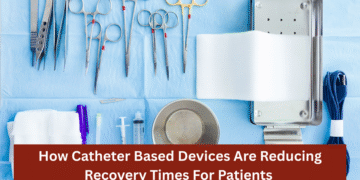A scaphoid fracture is one of the most common wrist injuries, especially among people who fall onto an outstretched hand. This small bone, located near the base of the thumb, plays a critical role in wrist stability. When fractured, it may not always heal properly without surgical intervention. If you’re considering or recovering from scaphoid fracture surgery, particularly with hand surgery in London, it’s essential to understand the recovery process, timeline, and what to expect.
What Is a Scaphoid Fracture?
The scaphoid is one of eight small carpal bones in the wrist. Because it has a limited blood supply, a fracture—especially in the middle or proximal part—can heal slowly or even fail to heal (nonunion) without medical attention. Symptoms include:
- Pain and tenderness near the base of the thumb
- Swelling in the wrist
- Difficulty gripping or moving the wrist
Surgical intervention is often required if the fracture is displaced, unstable, or has failed to heal with casting alone.
What Happens During Scaphoid Fracture Surgery?

Scaphoid fracture surgery typically involves the use of screws or pins to stabilise the bone fragments and promote healing. Depending on the fracture’s location and severity, your hand surgeon may perform the procedure using a minimally invasive approach or open surgery.
Patients who undergo hand surgery in London often benefit from modern techniques, which may shorten recovery time and reduce post-operative discomfort. The goal of surgery is to restore wrist function and prevent long-term complications like arthritis or chronic pain.
Immediate Recovery After Surgery
Following surgery, your wrist will be immobilised in a cast or splint for several weeks to allow the bone to heal. In the first few days after the procedure, expect:
- Swelling and bruising around the wrist and hand
- Mild to moderate pain managed with prescribed medication
- Limited hand and wrist mobility
- The need to keep the wrist elevated to reduce swelling
It’s important to follow your surgeon’s post-operative instructions carefully to avoid disrupting the healing process.
Recovery Timeline
Recovery duration varies depending on factors like age, fracture severity, and adherence to post-operative care. Here’s a general timeline for what to expect:
Weeks 1–6
- Wrist is immobilised with a cast or splint
- Limited use of the affected hand
- Stitches (if any) are removed within 10–14 days
- Initial swelling and bruising begin to resolve
- You may begin gentle finger movement to prevent stiffness
Weeks 6–12

- Your surgeon may remove the cast and begin light wrist movement
- X-rays or scans will assess how well the bone is healing
- You may start physical therapy to restore wrist flexibility
- Most patients can resume light daily activities, though lifting and strenuous activity should be avoided
Months 3–6
- Continued improvement in wrist strength and range of motion
- Gradual return to work and recreational activities, depending on occupation and sport
- Most people regain 80–90% of wrist function by this point
- Full healing of the bone is expected by the six-month mark in most cases
If you’ve had scaphoid fracture surgery in London, your hand surgeon will monitor healing closely and provide personalised guidance on your activity levels.
What Affects Recovery Time?
Several factors can influence how quickly you recover from a scaphoid fracture:
- Type and location of the fracture: Proximal fractures take longer to heal due to limited blood supply.
- Surgical technique used: Minimally invasive procedures often result in faster recovery times.
- Patient’s health status: Smokers and individuals with certain health conditions may experience slower healing.
- Compliance with aftercare: Following your surgeon’s advice, attending all follow-up appointments, and participating in physiotherapy are crucial.
The Role of Physiotherapy
Once your bone has started to heal, your surgeon will likely recommend physiotherapy. A hand therapist can help you regain:
- Wrist flexibility
- Grip strength
- Coordination for fine motor skills
This stage of recovery is just as important as the surgical procedure itself. Working with a qualified hand therapist in London can significantly improve your long-term outcome.
Returning to Work and Activities
When you can return to work or sports depends on your job type and the severity of your fracture:
- Desk work or light duties: Usually possible after 4–6 weeks with approval
- Manual labour or heavy lifting: May require 10–12 weeks or longer
- Sports: Depending on intensity, return can take 3–6 months
Always consult your hand surgery specialist in London before resuming high-impact or repetitive activities.
What Are the Risks of Delayed or Improper Healing?
Without proper treatment, scaphoid fractures may lead to complications such as:
- Nonunion (failure of the bone to heal)
- Avascular necrosis (bone tissue death due to lack of blood supply)
- Wrist arthritis
- Chronic pain and reduced function
Surgical repair performed by an experienced hand surgeon in London reduces the risk of long-term damage and ensures a more predictable recovery process.
Conclusion
Scaphoid fracture surgery can be highly effective in restoring wrist function and preventing long-term complications. While full recovery may take several months, working with a skilled team for hand surgery in London and following post-operative care instructions will greatly improve your chances of a successful outcome.
By understanding the recovery timeline and what’s involved in healing, you’ll be better prepared to manage your recovery and get back to your daily life with confidence.













